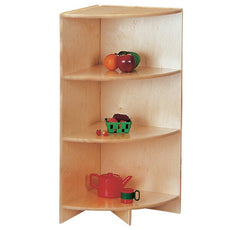← View All Buying Guides


School Shelving & Storage Buying Guide
School Outlet’s Tips
-

Assess the Needs
-

Durability
-

Safety Features
-

Flexibility and Adjustability
-

Visibility and Accessibility
-

Aesthetic
School Shelving & Storage Styles
-

Jonti-Craft Drafting & Art Supply Cabinets
-

Jonti-Craft Children's Library Shelving
-

Early Childhood Resources Mobile Organizer
-

Early Childhood Resources Three-Tier Rack
-

Young TimeShelf Storage Unit
-

Diversified Woodcrafts Storage Cabinets & Shelving
-

Shain Storage Cabinets & Shelving
-

Shain Tote Tray & Bin Storage Cabinet
-

Diversified Woodcrafts Tote Tray & Bin Storage Cabinet
-

Hirsh Industries Storage Cabinets
-

Whitney Brothers Cabinets
-

Lock and Roll Organizer Basic Storage System
-

Children's Factory Shelf Storage Unit






















